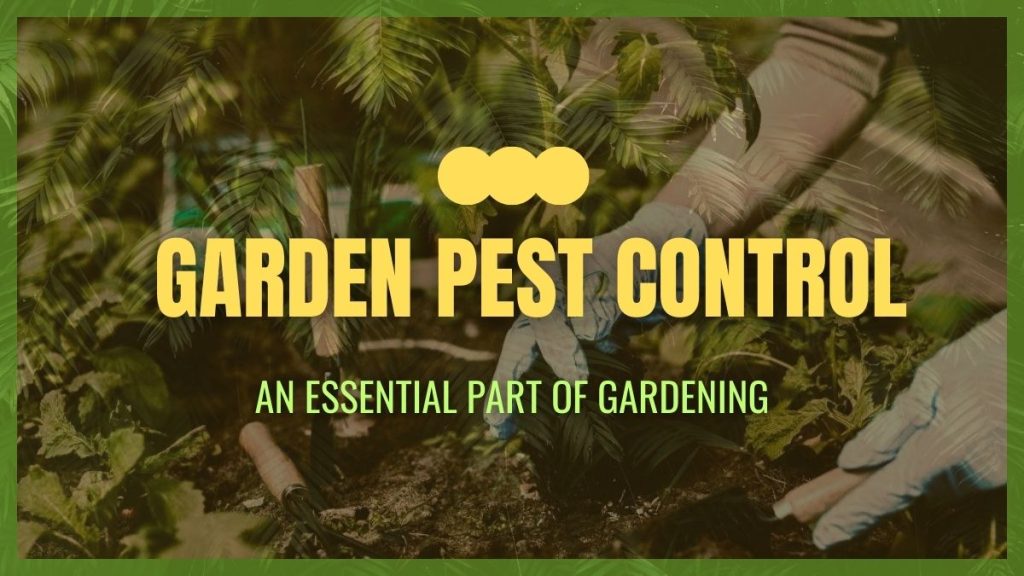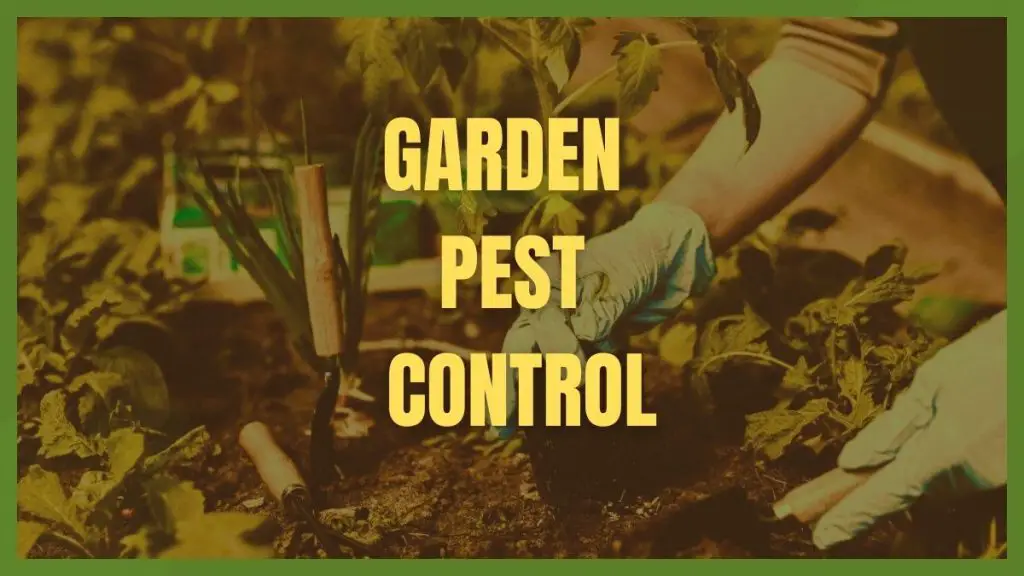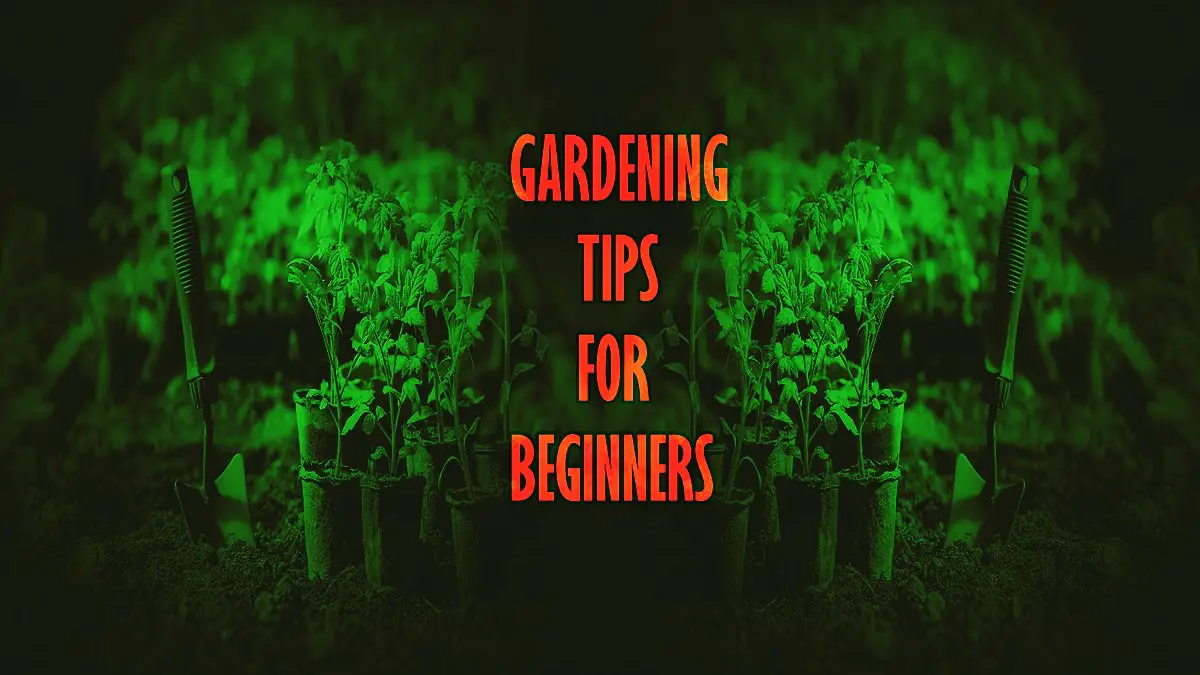My gardener friends, you are welcome here to get some tips and tricks to make your garden healthy. You have a garden of your own; it might be small or large. However, you will be aware about garden pest control that means some pests need to be managed. Basically, there are many ways of garden pest control that helps to maintain your garden properly. You can use chemical pesticides as well, but my suggestion is to avoid them.
You know chemicals are toxic to pests. But do you know it is also somehow toxic for plants?
The answer is yes. Chemical insecticides damage beneficial insects as well as plants. Attempting to reintroduce beneficial insects will help keep your garden under control. Creating a non-toxic spray at home with low-cost supplies will yield positive results.
Garden pests can pose a significant threat to your hard work, potentially damaging or even destroying your plants. Effective garden pest control is essential for ensuring a bountiful harvest and a visually appealing outdoor space. In this comprehensive guide, we’ll talk about garden pest control in detail which would be a great guide for gardeners to maintain their garden properly.
Related Article: Best Gardening Tips for Beginners: Cultivate Your Green Thumb
You may also read: The Art of Chaos Gardening: A Unique Approach Gardening

Related Article: The 11 Best Gardening Tool Sets of Recent Times
You may also read: The Ultimate Guide to Organic Gardening
Garden Pest Control Process for A Thriving Garden
Let’s dig in to know the common pests, their system of plant damage, and how to control them. I’m sure you will enjoy the journey of learning about the harmful pests in the garden.
Identifying Common Garden Pests
I’m sure that keeping your garden pest-free is on your mind while considering how to keep it healthy. What can be done to ensure that your garden is free of pests?
The solution is: You must acquire the ability to recognize pests. It is the prerequisite for establishing a pest-free environment.
Do you know who is the most dangerous enemy in the garden? Mostly bugs. Yes, it’s true. They might look quite cute, but they are not actually the plants or the gardener’s friends.
Let’s identify some of the common garden pests:
Aphid:
The most common bugs found in gardens are aphids. They are very small and tiny and have a pear-shaped body. Moreover, they are also soft-bodied insects or bugs. They can be red, yellow, white, or black-colored. They could have wings or not.
Caterpillars and Worms:
In actuality, worms and caterpillars are not the same. It’s challenging to distinguish between them based just on physical resemblances. Caterpillars are the larval stage of moths and butterflies. They may serve as pollinators and be beneficial insects. Examples include cabbage loopers, cabbage maggots, armyworms, cutworms, and hornworms.
Mealybugs:
Mealybugs are soft-bodied cottony insects. Its body is encased in a wax-like material. They are attracted mostly to tropical plants, along with fruits, potatoes, and ornamentals.
Japanese beetles:
Japanese beetles have mesmerizing beauty in them. Their wings are coppery, and their bodies have a gorgeous metallic blue-green shimmer. This little beetle is around ½” long.
Flea beetles:
Flea beetles are another beautiful beetle found in nature. These are also tiny, glossy, and measure about 2–3 mm. They come in a variety of hues, including brown, blue, and black. The intriguing aspect is that they are difficult to identify and jump out if disturbed.
Scale insect:
It’s fascinating to note that many scale insects first resemble plant bumps. Their color might vary from cottony white to dark brown. About ¼” is its length.
Squash Bugs:
Squash bugs are attracted mainly to gourds or squashes. These bugs are grayish-black or brown with a flat back. They have wings. It is ⅝” long.
Whiteflies:
They acquire their name from the waxy, white powder that covers them and is related to aphids and mealybugs. Whiteflies have white wings and a wedge-shaped, yellow-white body. They are tiny, white moth-like, about 1/10” long.
Slugs and snails:
Slugs have tiny antennae and a slimy, black or brown appearance that resembles short worms. In appearance, snails resemble slugs, but they can hide when disturbed inside the hard, circular shells on their backs.
Spider mites:
Spider mites are such tiny species that they seem like dots to the naked eye. They are 1/20” long.
Plant Damage by Insect Pests
Aphid:
Aphids are typically observed in groups on the tender parts or recently emerging sections of plants and flowers. They distort and discolor foliage and flowers, causing them to curl. Aphids emit a sticky, sugary material called honeydew as a byproduct after sucking plant sap, which has the ability to draw ants to the same region.
Caterpillars and Worms:
They have enormous feeding capacity. They consume the leaves and stems of plants. Pay attention to their cues. The plants may have holes in them, or the foliage may have disappeared. The tiny caterpillars cause skeletonized leaves by feeding on the undersides of the leaves.
Mealybugs:
Mealybugs also secrete honeydew by sucking plant sap. This results in early fruit falling, yellowing or withering foliage, inedible fruit, and the death of the plant.
Japanese beetles:
The Japanese beetle is a ravenous plant pest that can be difficult and costly to eradicate. Japanese beetle grubs eat the roots of grass. Adults prey on the leaves, flowers, or fruits of a variety of different ornamental and agricultural plants.
Flea beetles:
Flea beetles mainly attack cole crop seedlings. They consume leaves, leaving behind ragged holes and scattered pits.
Scale insect:
Scale insects suck out essential plant saps. Leaves could drop off or become yellow. Dieback of twigs and branches and stunted leaves and buds are the symptoms of sacle attack.
Squash Bugs:
In a short period of time, squash bugs can cause a lot of harm. In addition, they drain sap from plants, turn leaves and vines black, stop fruit production, and sometimes even kill small plants or seedlings.
Whiteflies:
Whiteflies directly damage plants. When they feed on the plant sap, they release a toxic substance into the plant. Plants die for that reason. Wherever it feeds, discolored patches are left behind.
Slugs and snails:
They leave smooth-edged, asymmetrical holes in leaves and flowers. They only get out at night and damage the plant parts.
Spider mites:
Spider mite damage will first emerge as little yellow or brown patches on the plant’s leaves. The plant may cease growing and produce all yellow leaves if it is severely affected.
Control Method
Aphid:
Sometimes it helps to select the damaged region and destroy it manually. Using a nozzle to spray powerful water also helps. The most effective control strategies are insecticidal soaps and neem/canola oil.
Caterpillars and Worms:
Plant netting with a weave thin enough to prevent pest species’ moths or butterflies from laying eggs on plants should be placed over them. Remove the caterpillars from the plants and place them in a bucket of soapy water. Caterpillars that are nesting will perish in a vinegar and water mix.
Mealybugs:
It’s best to unleash the predator beetles. Make sure a plant will get enough water before applying mealybug killers. Isopropyl alcohol application is beneficial. Insecticidal soap combined with neem oil spray is very beneficial.
Japanese beetles:
Typically, individuals remove the beetles by brushing them off the plants and placing them in a jar filled with water and dish soap, where they perish rapidly. It is very helpful to spray rubbing alcohol and water emulsions. It also helps to use traps.
Flea beetles:
A mixture of isopropyl alcohol, water, and liquid soap helps repel flea beetles.
Scale:
Spraying isopropyl alcohol helps repel scale insects. Apply dormant oil to woody plants in late winter to suffocate pests. Spray plants with neem or a mild horticultural oil in the spring and summer.
Squash Bugs:
Keep the garden clear of trash and debris so that squash bugs have nowhere to hibernate throughout the winter. Squash bug populations can be managed by natural predators like wolf spiders and tachinid flies. Diatomaceous earth acts fast upon contact and is free of harmful substances.
Whiteflies:
Yellow sticky traps are useful for monitoring and controlling adult populations. Using a tiny, hand-held Hoover to collect whiteflies is another mechanical method for managing them.
Slugs and snails:
Slugs and snails prefer not to crawl over uneven ground. It is possible to dissuade them with gravel, wood ashes, eggshells, coffee grinds, and diatomaceous earth.
Spider mites:
Insecticidal and miticidal oils and soaps can be used to manage the majority of spider mites. It is possible to employ the oils, both dormant and horticultural. Spider mites can be effectively controlled by pruning plants, watering them properly, spraying them with water, and releasing beneficial insects.
Related Article: Beneficial Garden Insects for Natural Pest Control – A Complete Guide
You may also read: Best Plants to Grow Under Trees – A Complete Guide
Some Beneficial Insects for Garden Pest Control
- Aphid Parasite or Aphid Predator
- Beneficial Nematodes
- Bumblebee
- Ladybug beetle
- Mealybug destroyer
- Spider mite predator
- Whitefly Parasite
- Praying mantis
- Moth-egg Parasite
- Soldier bug and many more
To know more about garden pests, GO HERE >>>
Related Article: The Top 10 Best Pruning Saws for Gardeners
You may also read: The Ultimate Guide to Choosing the Right Aeroponic Tower Garden
Final Thoughts
The process of creating a pest-free garden is not easy. To manage garden pests, you must devise a plan. The truth is that you can never entirely eradicate pests from the garden. Therefore, it’s preferable to keep them under control and limit their growth. The most effective way to reduce plant pests is to introduce predators. Certain invasive species can be used; they don’t require much attention.
The fundamental methods for controlling pests in a garden include regular inspections, healthy soil maintenance, barrier construction, and the use of traps. You must neutralize mechanical, chemical, biological, and cultural processes in order to reach the advanced stage. If, after doing everything correctly, you still run into trouble, it will be wise to get professional assistance. Lastly, the gardener always tends to the garden as if it were their own child. They are inextricably linked to the garden. Thus, pests turn into their enemies. We appreciate your participation in our pest-control adventure.
Related Article: The 9 Best Garden Tool Organizers of Recent Times
Related Article: The Ultimate Guide to Garden Tool Organization: Maximize Efficiency
You may also read: Indoor Plant Care Tips for Enthusiasts: Lush Oasis Secrets
- Indoor Plant Care Tips for Enthusiasts: Lush Oasis Secrets - July 6, 2024
- The Best Electric Garden Tools: Maximize Your Green Thumb! - June 23, 2024
- Exploring the Diversity of Rock Garden Plants for Unique Gardens - June 10, 2024




Pingback: The 14 Best Tips For Designing A Small Garden - Dwell Gardens
Pingback: The Ultimate Guide to Garden Tool Organization: Maximize Efficiency - Dwell Gardens
Pingback: The Art of Chaos Gardening: A Unique Approach Gardening - Dwell Gardens
Pingback: The Ultimate Guide to Choosing the Right Aeroponic Tower Garden - Dwell Gardens
Pingback: Indoor Plant Care Tips for Enthusiasts: Lush Oasis Secrets - Dwell Gardens